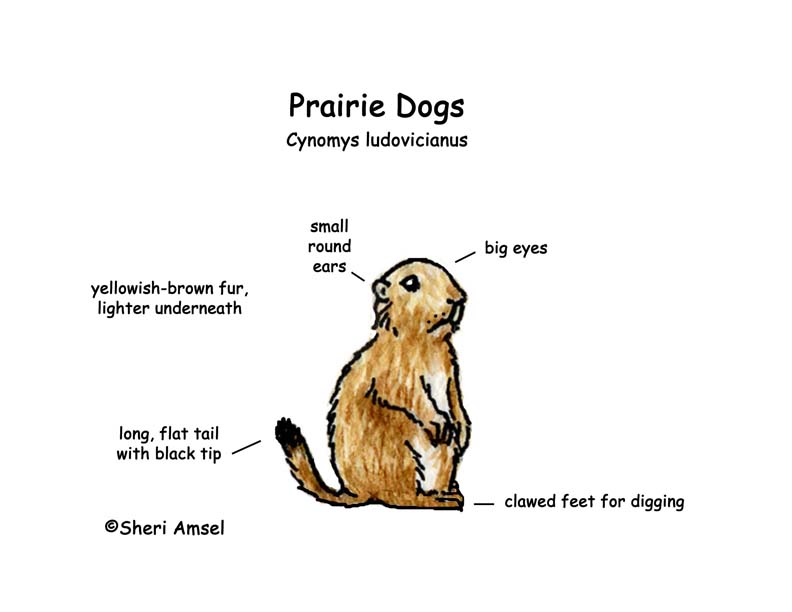
/home/sheriexplores/apps/router.php line 53 SQLSTATE[HY000]: General error: 144 Table './sheriexplores_exploredb/access_log' is marked as crashed and last (automatic?) repair failed

Prairie dogs are found in the western United States.
Prairie dogs live out on grass prairies, plateaus and some desert areas.
They are a grizzled, yellow color, can be up to 1.5 feet long, including their tail and weigh up to 3 pounds.
Prairie dogs dig large burrows that are made up of long tunnels and chambers. Many prairie dog burrows in one area is called a town. They are active during the day (diurnal) sitting above the opening of their burrows. They give a sharp warning call when sensing danger and dive to the safety of their holes. They live in groups with one male and several females.
They are rodents and herbivores eating grasses, roots, weeds, and flowers.
Predators include coyotes, bobcats, eagles, hawks, black footed ferrets, rattlesnakes, bull snakes and badgers.
Females have one litter per year. They are pregnant for 1 month (gestation) and have up to 8 young.
They can live 3-5 years in the wild.
When you research information you must cite the reference. Citing for websites is different from citing from books, magazines and periodicals. The style of citing shown here is from the MLA Style Citations (Modern Language Association).
When citing a WEBSITE the general format is as follows.
Author Last Name, First Name(s). "Title: Subtitle of Part of Web Page, if appropriate." Title: Subtitle: Section of Page if appropriate. Sponsoring/Publishing Agency, If Given. Additional significant descriptive information. Date of Electronic Publication or other Date, such as Last Updated. Day Month Year of access < URL >.
Amsel, Sheri. "Prairie Dogs (General Information)" Exploring Nature Educational Resource ©2005-2024. November 25, 2024
< http://www.exploringnature.org/db/view/362 >

